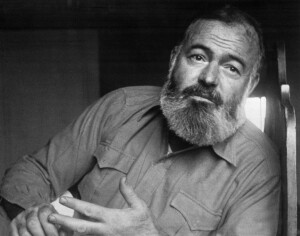William White was a professor of Journalism and American Studies, which may partially explain his academic interest in certain American writers, but we at Jot HQ are at a loss to understand why he spent time and good money assembling a collection of the work of such a mediocre American novelist as John Marquand. In his account of how he came to do so, White seems a little embarrassed, as if he needed to justify his ‘ affection ‘ for a novelist ‘not of the first rank ’. And when he brings in the opinion of another critic to support his case, he further mystifies us. According to T. G .Rosenthal, Marquand ‘never achieved greatness but was an excellent entertainer’. Talk about damning with faint praise. The status of Marquand as a novelist is unlikely to alter in the coming years. Today, most of his first editions can be bought for a few pounds, although Do Tell Me, Doctor Johnson , at £60, and The Late Lord Apsley ( according to White the best thing he wrote) at £90 are exceptions. Maybe it was the journalist in White that saw merit in Marquand. But ever the completist, he could not pursue his prey with half measures:
‘ I have just about every first edition of his forty novels, collections of short pieces, books he wrote introductions for, and pamphlets plus reprints, English editions, and translations—275 volumes, not counting periodical appearances…’
In a previous blog on White as a collector we have seen how admiration for a writer, such as Housman, could become an overweening obsession bordering on mild insanity. This confession concerning Marquand only confirms this view.
White’s interest in collecting Ernest Hemingway makes much more sense. He began to read him as an undergraduate in the ‘thirties and after buying as ‘ bad copy ‘ of The Torrents of Spring he decided to collect him one day with a view to bringing up to date Cohn’s 1931 bibliography. Like any true bibliographer and collector, White looked for the magazines in which Hemingway’s work first appeared in the ‘thirties and so trawled the second hand ‘ magazine shops’ of Los Angeles for copies of Ken and Esquire, which he bought for ‘ very reasonable prices, 50 cents to $2.00. Other Hemingway titles were acquired for ‘little more than their original prices.
His big break came in 1946 when Cohn, who managed The House of Books, offered him 112 items many of which had formerly belonged to Arnold Gingrich, editor of Esquire. He turned down the six MSS in the collection but in one fell swoop bought ninety items ( he doesn’t specify what these were or what he paid, but many would have been contributions to magazines ). Then comes the confession that many collectors find difficult to make. Offered Hemingway’s first two books, Three Stories and Ten Poems (1923), one of the legendary rarities in the field of modern first editions, for $125, and in our time (1924), another incredible rarity, for $150, he turned them down. Today, both books are among the most sought after titles in American literature and are always star items at book fairs throughout the world. I recall seeing a copy of Three Stories and Ten Poems in its dust jacket at a fair in London a few years ago proudly displayed on a glass shelf with a price tag of more than £100,000 on it ( it could have been a lot more). In fact, I think I‘ve seen copies of both of these rarities at the same fair. The reason White gave for not buying these books was that he thought the prices would ‘ come down ‘ in the future. Some hope ! In 1965 copies of the same books were advertised at $500 and $650 respectively. The moral of this tragic tale is that prices of very rare books never, ever ‘come down ‘. White doesn’t say whether the books he turned down had dust jackets, but if they did that’s all the more reason for buying them. Today, collectors are obsessed, quite rightly, with buying books with their original dust jackets. Back in White’s day, this may not have been a priority if a jacket added substantially to the price of a book, but this consideration always needs to be borne in mind. Incidentally, just after the war ( White doesn’t make it clear if the books were offered to him by Cohn) $125 and $150 don’t seem excessively high for rare books by an author at the height of his fame.
What makes White a scholar rather than a collector with money to burn is his quest to buy as much material related to Hemingway as possible. So, we get another rather startling boast:
‘Since 1946 I have picked up more than 300 Hemingway editions, impressions, and reprints, including translations, and at least that many more periodicals containing his writings—perhaps a thousand items, making it one of the largest collections of published Hemingway and Hemingway-ana. Last year, in almost every city in which we stopped in a trip around the world, I managed to find numerous translations: Korean in Seoul, Japanese ( a five volume collected Hemingway) in Tokyo, English paperback ( not sold in the USA for copyright reasons) in Hong Kong, Hebrew in Tel Aviv, German on the island of Rhodes, and also in Munich and Vienna, Greek in Athens, and a number of French in paperback in Brentano’s in Paris.’ [RR]
To be continued.
